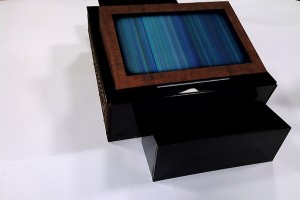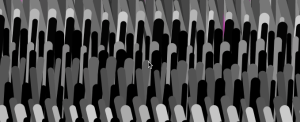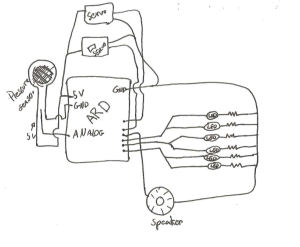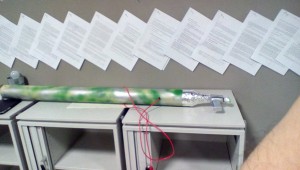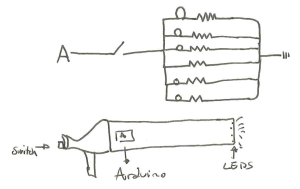Author: Luis Morales Navarro
A la mémoire de JM Jacquard + Processing
Most cultural products are mediated through computers; from the beginning of the creative process of conceiving an idea, to production, distribution, and consumption computers play a crucial role in the way we understand media. With computers, media becomes more malleable increasing the possibilities of re-imagining existing content, creating several iterations with the same data, and of visualizing data in new ways. Today cultural products are the outcome of the process of reshaping data and rethinking through it. My final project, for example, by building on Borges’s ideas of language in his short story Tlon, Uqbar, Orbis Tertius re-imagines the language of Tlon with the use of data stored in Cloudant, and Merriam Webster’s dictionary.
Continue reading “A la mémoire de JM Jacquard + Processing”
PacDrool
What if Pacman ate drools instead of yellow ellipses.
For my game I recreated Pacman here’s how it looked like:
Computer Graphics
For this week’s assignment we were asked to recreate one of the computer graphics from Computer Graphics and Art Magazine.
I looked at Hiroshi Kawano’s prints:
and made this simplified version that changes with a click:
Here’s how it looks like:
Create 2 is here!!!! LET ME KNOW IF YOU WANT TO BUILD SOMETHING WITH IT!!!
Nyan Luis
What if I was an annoying cat? And we couldn’t communicate? And all I could say was meow?
My version of the super famous Nyan Cat… If only I could add music to mine 🙁 🙁
The Panda That Wanted To Be A Polar Bear
Allen has a polar and he loves it. He’s been sleeping with the polar bear since forever and his obsession with it is becoming unhealthy. For my stupid pet trick I wanted to find a way for Allen to move on from the polar bear but I couldn’t. I didn’t have the courage to steal the polar bear and transform it into a horrific thing and then give it back to Allen. I just couldn’t do that him. The last time he cried he was three months old and didn’t want to break his little heart.
So I stole a panda bear from one of my friends, opened its back, and inserted an Arduino, LEDs, two servos, a speaker, and a pressure sensor. The idea was to make a panda bear that would always make noise. The user, thinking that it would quiet down by hugging it would hug the bear making its eyes move, turn red, and making the noise even more annoying. With the amount of movement, sound, and light depending on the pressure of the hug.
heat machine or love-o-meter
So we had to make a love machine or something similar. I decided to take the traditional path and work on a love-o-meter using a temperature sensor. The sensor, connected to an analog input, gave me numbers that I couldn’t read, so I used arbitrary numbers after playing around and exposing it to several temperatures. Depending on the values received a different number of LEDs would turn on. The hotter the more LEDs turned on.
Here’s how it looked:
Spaceship Water Dispenser
I always carry my water bottle around and filling it up with water is super boring, so I decided to add some LEDs to the water dispenser in the IM Lab. Everything is still there, except for the Arduino, so if you want to see it working or make it stay there forever download the code below to an Arduino and fill up your bottle.
The idea:
I wanted to have a line of LEDs replicate the idea of water flowing by creating a pattern of LEDs turning on and off. Then I thought of having and LED that would be on whenever the switch was opened.
PEEEWWWWWWW –> The Illusion of Interactivity
I’m really bad at keeping up with my journal but today I got a super friendly reminder from Scott and I decided to add all the posts I was missing 🙂 YAAAYYYY! Thanks Scott!
So here we go:
Earlier on the semester I took an invention from the junk shelf, a cardboard tube attached to a horn, and added some LEDs that would only turn on when the user blew the horn. The aim of the exercise was to create a switch that could turn on LEDs without being pressed by the user’s fingers. In my case, I took a normal switch and attached it to the horn so that the user would press it with his/her lips.
Here’s what the circuit looked like:
The interesting part about the user experience was the illusion that what turned on the LEDs was the air blowing through the horn and not the lips pressing a switch. This is important in thinking not only how systems work but also how the user perceives they work to focus not only on creating an objects that work in a certain way but experiences that are imagined in a certain way.

